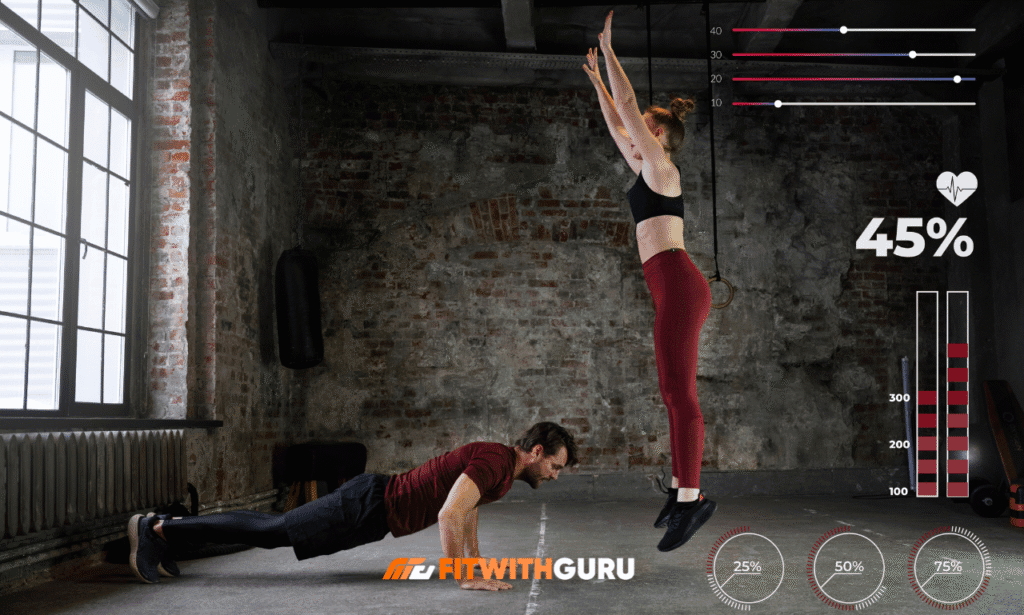A calisthenics workout schedule serves as the foundation for building strength, muscle, and endurance, all using nothing but your body weight. If you’ve been scrolling through fitness content wondering how people achieve incredible physiques without expensive gym memberships, you’re in the right place.
This comprehensive guide will walk you through a proven 30-day transformation plan that works for beginners and intermediate athletes alike.
Understanding the Basics of Calisthenics Training
Calisthenics workout routines revolve around fundamental movement patterns that humans have performed for centuries. These exercises use gravity and your body weight as resistance to build functional strength.
Unlike machine-based training, which locks you into a fixed path, bodyweight movements engage stabilizer muscles and improve coordination simultaneously. The beauty of a calisthenics workout schedule is its accessibility—you can train anywhere, anytime, without spending a dime on equipment.
Your living room becomes your gym, the park becomes your training ground, and that playground near your house transforms into an outdoor fitness center. The core exercises include push-ups, pull-ups, squats, lunges, dips, planks, and various progressions of these movements.
Each exercise targets multiple muscle groups, making calisthenics incredibly efficient for building total-body strength.
Why You Need a Structured 30-Day Plan
Random workouts lead to random results—it’s that simple. A structured 30 day calisthenics workout plan for beginners eliminates guesswork and creates progressive overload, which is essential for continuous improvement.
Your muscles adapt to stress by growing stronger, but they need consistent, increasing challenges to keep developing. Without a schedule, you might train the same movements at the same intensity week after week, hitting a frustrating plateau.
A well-designed calisthenics workout plan incorporates progression principles, adequate recovery, and balanced muscle development. You’ll target pushing movements one day, pulling movements another, and legs on a different day, ensuring no muscle group gets neglected.
The 30-day timeframe is perfect because it’s long enough to see real results but short enough to maintain motivation and commitment.
Your Free Calisthenics Workout Schedule Breakdown
This free calisthenics workout schedule follows a strategic split that allows maximum recovery while maintaining training frequency.
Weekly Training Structure:
| Day | Focus | Intensity |
| Monday | Push (Chest, Shoulders, Triceps) | High |
| Tuesday | Pull (Back, Biceps) | High |
| Wednesday | Legs & Core | Moderate |
| Thursday | Active Recovery | Low |
| Friday | Full Body Circuit | High |
| Saturday | Skill Work & Flexibility | Moderate |
| Sunday | Complete Rest | None |
This rotation repeats throughout the 30 days with progressive difficulty increases each week. One Week focuses on mastering form and building baseline endurance.
Week two increases volume by adding extra sets or reps to each exercise. Three Week introduces more challenging variations of the basic movements. Four Week combines everything with increased intensity and complexity.
Week 1: Building Your Foundation
The first week of your calisthenics workout schedule focuses exclusively on form and muscle activation.

Monday – Push Day:
- Regular Push-ups: 3 sets of 8-12 reps
- Incline Push-ups: 3 sets of 10-15 reps
- Pike Push-ups: 3 sets of 6-10 reps
- Tricep Dips (on chair or bench): 3 sets of 8-12 reps
- Plank Hold: 3 sets of 30-45 seconds
Rest 90 seconds between sets, focusing on controlled movements rather than speed.
Tuesday – Pull Day:
- Australian Pull-ups (horizontal rows): 4 sets of 8-12 reps
- Dead Hangs: 3 sets of 20-30 seconds
- Scapular Pull-ups: 3 sets of 8-10 reps
- Band-Assisted Pull-ups or Negative Pull-ups: 3 sets of 5-8 reps
If you can’t do pull-ups yet, negatives are your best friend. Jump up to the top position and lower yourself down as slowly as possible.
Wednesday – Legs & Core:
- Bodyweight Squats: 4 sets of 15-20 reps
- Three sets of ten repetitions per leg for walking lunges
- Glute Bridges: 3 sets of 15-20 reps
- Plank: 3 sets of 45 seconds
- Bicycle Crunches: 3 sets of 20 reps
Thursday is active recovery—go for a 20-30 minute walk or do light stretching.
Friday – Full Body Circuit:
Perform each exercise back-to-back with minimal rest, then rest 2 minutes before repeating the circuit.
Complete 3 total rounds.
- Push-ups: 10 reps
- Bodyweight Squats: 15 reps
- Australian Rows: 10 reps
- Lunges: 10 reps per leg
- Plank: 30 seconds
Saturday focuses on skill work like handstand practice against a wall and flexibility training.
Week 2-3: Increasing Volume and Intensity
Your second and third weeks following this 30 day calisthenics workout plan for beginners build upon the foundation you’ve established.
In week two, add one extra set to each exercise from week one. If you did 3 sets of push-ups before, now you’re doing 4 sets. Week three introduces exercise variations that increase difficulty.
Replace regular push-ups with archer push-ups or diamond push-ups. Substitute regular squats with jump squats or pistol squat progressions. Add tempo training—perform the lowering phase of each exercise in 3-4 seconds to increase time under tension.
Slower reps often build more strength than fast, explosive movements for beginners. Your muscles work harder to control the descent, leading to greater adaptation. Sarah, a 35-year-old teacher, struggled with this concept initially. She thought fitness meant going as fast as possible, but when she slowed down and focused on the eccentric phase, her strength skyrocketed.
Week 4: Peak Performance and Testing
The final week of your calisthenics workout schedule combines everything you’ve learned with maximum intensity.
Monday – Advanced Push Day:
- Regular Push-ups: 4 sets to failure (aim for 20+ reps)
- Diamond Push-ups: 3 sets of 10-15 reps
- Decline Push-ups: 3 sets of 12-15 reps
- Pike Push-ups: 4 sets of 10-12 reps
- Tricep Dips: 3 sets of 15-20 reps
The volume has increased significantly from week one, but your body is now conditioned to handle it.

Tuesday – Advanced Pull Day:
- Pull-ups or Chin-ups: 4 sets of maximum reps
- Australian Rows: 4 sets of 15-20 reps
- Negative Pull-ups: 3 sets of 5 reps (8-second descent)
- Dead Hang: 3 sets of 45-60 seconds
Wednesday – Advanced Legs & Core:
- Jump Squats: 4 sets of 12-15 reps
- Bulgarian Split Squats: 12 repetitions per leg, 3 sets
- Single-Leg Glute Bridges: 3 sets of 12 reps per leg
- Hollow Body Hold: 3 sets of 30-45 seconds
- Leg Raises: 3 sets of 12-15 reps
Friday’s full-body circuit increases from 3 rounds to 5 rounds with the same 2-minute rest between circuits.
Essential Recovery and Nutrition Tips
The best calisthenics workout plan in the world won’t work without proper recovery and nutrition. Your muscles don’t grow during workouts—they grow during rest when properly fueled. Sleep at least 7-8 hours per night because growth hormone secretion peaks during deep sleep phases.
Protein intake should be around 0.7-1 gram per pound of body weight to support muscle repair. Don’t overthink nutrition—focus on whole foods, adequate protein, plenty of vegetables, and sufficient calories to support your training.
Hydration matters more than most people realize—aim for half your body weight in ounces of water daily. Stretching and mobility work accelerate recovery by improving blood flow to muscles and reducing soreness. Spend 10-15 minutes after each workout doing static stretches for all major muscle groups.
Progressive Overload: The Key to Continuous Improvement
After completing this 30-day free calisthenics workout schedule, your journey doesn’t end—it evolves. Progressive overload means continuously increasing the demands on your muscles.
You can increase reps, add sets, reduce rest periods, slow down tempo, or progress to more difficult exercise variations. Once you master regular push-ups for 30+ reps, move to archer push-ups, then pseudo-planche push-ups.
Each calisthenics movement has a progression pathway that can challenge you for years. Document your progress by recording videos or keeping a training journal noting exercises, sets, reps, and how the workout felt.
Frequently Asked Questions
Can I build muscle with just a calisthenics workout schedule?
Absolutely, you can build significant muscle mass through calisthenics alone. Bodyweight training creates sufficient mechanical tension and metabolic stress to trigger muscle growth, especially for beginners and intermediate athletes. Progressive overload remains essential—you must continuously challenge your muscles with harder variations, more volume, or increased intensity. Nutrition plays a crucial role in muscle building, regardless of training style. Ensure adequate protein intake and a caloric surplus if hypertrophy is your primary goal.
How long before I see results from this 30 day calisthenics workout plan for beginners?
You’ll notice strength improvements within the first 7-10 days as your nervous system adapts and learns to recruit muscle fibers more efficiently. Visible physical changes typically appear around weeks 3-4, though this varies based on starting body composition and nutrition habits. Most people experience noticeable definition in their arms, shoulders, and core by day 30 if they follow the schedule consistently. Energy levels and mood often improve within the first week as exercise triggers endorphin release and improves sleep quality.
Do I need any equipment for this free calisthenics workout schedule?
The basic schedule requires minimal equipment—a pull-up bar is the most essential investment, costing $20-50 for a doorway model. Resistance bands help with assisted pull-ups and adding variable resistance to exercises. A sturdy chair or elevated surface for dips and incline push-ups is helpful but not mandatory. Everything else uses your body weight and gravity, making this truly accessible for home training.
Can I do calisthenics every day?
While some mobility and light skill work can be done daily, training the same muscle groups intensely every day prevents adequate recovery. Your muscles need 48-72 hours to repair and strengthen after intense training sessions fully. This calisthenics workout plan strategically rotates muscle groups to allow recovery while maintaining training frequency. Listen to your body—persistent soreness, decreased performance, or joint pain signals you need additional rest.
What if I can’t do pull-ups or push-ups yet?
Start with exercise regressions that match your current ability—there’s no shame in modifying movements. For push-ups, start with wall push-ups, then move to incline push-ups on a table or countertop, gradually lowering the elevation as you strengthen. For pull-ups, start with dead hangs to build grip strength, then progress to scapular pull-ups, followed by negative pull-ups and band-assisted variations. Most people need 4-8 weeks of consistent training to achieve their first full pull-up, so patience is essential.
Conclusion
This comprehensive calisthenics workout schedule provides everything you need to transform your physique and strength over the next 30 days. Remember that consistency beats intensity—showing up and completing the workout, even when motivation is low, produces better long-term results than sporadic intense sessions.
Your 30-day calisthenics workout plan for beginners is just the starting point of a lifelong fitness journey that requires no gym membership, minimal equipment, and can be done anywhere in the world.
Document your starting point with measurements, photos, and performance benchmarks so you can accurately track progress and celebrate improvements.
Start this calisthenics workout plan today, commit to the process, and trust that your body will respond to the structured stimulus you’re providing. Thirty days from now, you’ll look back amazed at what you’ve accomplished with nothing but your body weight, determination, and this proven schedule.

